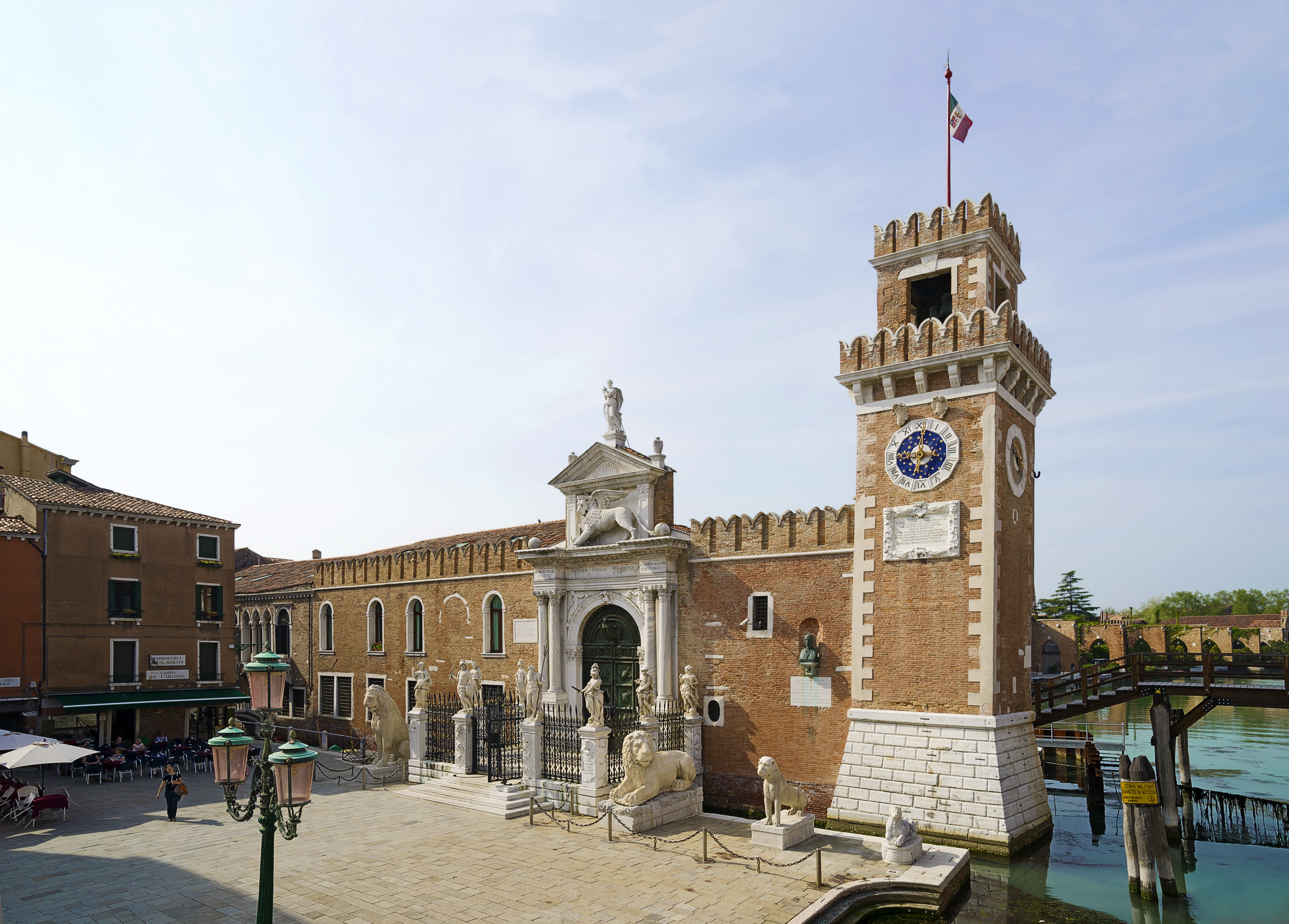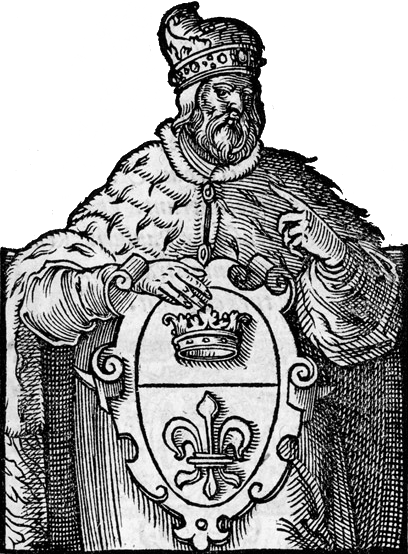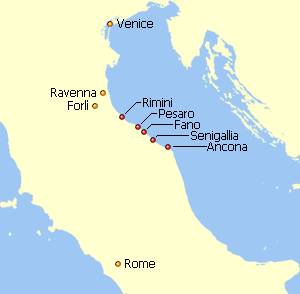|
Maurizio Galbaio
Maurizio Galbaio (Latin: Mauricius Galba) (died 787) was the seventh traditional, but fifth historical, Doge of Venice from 764 to his death. He was the first great doge, who reigned for 22 years and set Venice on its path to independence and success. History Maurizio was raised to the dogeship at a time when two tribunes were being elected annually to check the power of the doge. His predecessor had been from a pro- Lombard faction, but Maurizio was a wealthy man from pro-Byzantine Heraclea. He opposed both the strong republican faction, which supported moving towards ''de facto'' independence, and the pro-Frankish and pro-Lombard factions. He received the titles of ''magister militum'' and ''hypatos'' from the Emperor Leo IV. The Lombard king Desiderius, in light of the alliance between the papacy and the Frankish king Charlemagne and the strong clerical support for Frankish hegemony in Venice, ravaged the states of the church and Istria, even capturing the doge's son Giov ... [...More Info...] [...Related Items...] OR: [Wikipedia] [Google] [Baidu] |
Domenico Monegario
Domenico Monegario was the traditional sixth Doge of Venice (756–764). History He was elected with the support of the Lombard king Desiderius. However, in order to maintain necessary good relations with Byzantium and the Franks, two tribunes were elected annually to limit ducal power. Domenico came to resent these checks and was removed after eight years. During his reign, the transformation of the Venetians from fishermen to marine traders happened, with audacious travels as far as the Ionian Islands and the Levant. The art of shipbuilding was improved to make sturdier, faster ships. Venetian wealth increased via trade and the city took on the medieval character it held for the next millennium. When Pope Paul I demanded donations from Venice to the Holy See, the Doge Monegario was deposed, blinded, and exiled as his two predecessors had been. The surname Monegario may derive from ', that is, a friar or monk, or ', that is, a minter. Sources * Norwich, John Julius. '' ... [...More Info...] [...Related Items...] OR: [Wikipedia] [Google] [Baidu] |
Castello, Venice
Castello is the largest of the six sestieri of Venice, Italy. History There had been, since at least the 8th-century, small settlements of the islands of San Pietro di Castello (for which the sestiere is named). This island was also called Isola d'Olivolo. From the thirteenth century onward, the district grew around a naval dockyard on what was originally the Isole Gemini. The land in the district was dominated by the ''Arsenale'' of the Republic of Venice, then the largest naval complex in Europe. A Greek mercantile community numbering around 5,000 in the Renaissance and late Middle Ages was based in this district, with the Flanginian School and the Greek Orthodox Church of San Giorgio dei Greci being located here, of which the former comprises the Hellenic Institute of Byzantine and Post-Byzantine Studies in VeniceGreece: Books and Writers (PDF). Ministry of Culture — National Book Centre of Greece. 2001. p. 54. . and the latter is now the seat of the Greek Orthodox Arc ... [...More Info...] [...Related Items...] OR: [Wikipedia] [Google] [Baidu] |
8th-century Doges Of Venice
The 8th century is the period from 701 ( DCCI) through 800 ( DCCC) in accordance with the Julian Calendar. The coast of North Africa and the Iberian Peninsula quickly came under Islamic Arab domination. The westward expansion of the Umayyad Empire was famously halted at the siege of Constantinople by the Byzantine Empire and the Battle of Tours by the Franks. The tide of Arab conquest came to an end in the middle of the 8th century.Roberts, J., '' History of the World'', Penguin, 1994. In Europe, late in the century, the Vikings, seafaring peoples from Scandinavia, begin raiding the coasts of Europe and the Mediterranean, and go on to found several important kingdoms. In Asia, the Pala Empire is founded in Bengal. The Tang dynasty reaches its pinnacle under Chinese Emperor Xuanzong. The Nara period begins in Japan. Events * Estimated century in which the poem Beowulf is composed. * Classical Maya civilization begins to decline. * The Kombumerri burial grounds are founde ... [...More Info...] [...Related Items...] OR: [Wikipedia] [Google] [Baidu] |
797 Deaths
__NOTOC__ Year 797 ( DCCXCVII) was a common year starting on Sunday (link will display the full calendar) of the Julian calendar. The denomination 797 for this year has been used since the early medieval period, when the Anno Domini calendar era became the prevalent method in Europe for naming years. Events By place Byzantine Empire * April 19 – Empress Irene organizes a conspiracy against her son Constantine VI. He is captured and blinded; Irene exiles him to Principo, where he dies shortly thereafter of his wounds. Irene begins a 5-year reign, and calls herself '' basileus'' ("emperor") of the Byzantine Empire. Europe * King Charlemagne issues the '' Capitulare Saxonicum'', making Westphalian, Angrian and Eastphalian Saxons equal to other peoples in the Frankish Kingdom. The Nordalbian Saxons revolt; a Frankish fleet is sent to the North Sea coast of Germany. It lands in Hadeln, a marshy coastal region between the Weser and Elbe estuaries, near modern-day C ... [...More Info...] [...Related Items...] OR: [Wikipedia] [Google] [Baidu] |
List Of Doges Of Venice
The following is a list of all 120 of the Doges of Venice ordered by the dates of their reigns. For more than 1,000 years, the chief magistrate and leader of the city of Venice and later of the Most Serene Republic of Venice was styled the ''Doge'', a rare but not unique Italian title derived from the Latin Dux. Doges of Venice were elected for life by the city-state's aristocracy. The Venetian combination of elaborate monarchic pomp and a republican (though "aristocratic") constitution with intricate checks and balances makes "''La serenissima''" (Venice) a textbook example of a crowned republic. Despite the great power given to them, the Venetian Doges were restricted by law (unlike the Doges of the Republic of Genoa) to spend the rest of their lives inside the Doge's Palace complex and St Mark's Basilica, occasionally leaving for diplomatic reasons. Byzantine period Magister militum per Venetiae Ducal period Republican period Legacy After the Fall of the Republic of ... [...More Info...] [...Related Items...] OR: [Wikipedia] [Google] [Baidu] |
New York, New York
New York, often called New York City or NYC, is the most populous city in the United States. With a 2020 population of 8,804,190 distributed over , New York City is also the most densely populated major city in the United States, and is more than twice as populous as second-place Los Angeles. New York City lies at the southern tip of New York State, and constitutes the geographical and demographic center of both the Northeast megalopolis and the New York metropolitan area, the largest metropolitan area in the world by urban landmass. With over 20.1 million people in its metropolitan statistical area and 23.5 million in its combined statistical area as of 2020, New York is one of the world's most populous megacities, and over 58 million people live within of the city. New York City is a global cultural, financial, entertainment, and media center with a significant influence on commerce, health care and life sciences, research, technology, education, ... [...More Info...] [...Related Items...] OR: [Wikipedia] [Google] [Baidu] |
Alfred A
Alfred may refer to: Arts and entertainment *''Alfred J. Kwak'', Dutch-German-Japanese anime television series * ''Alfred'' (Arne opera), a 1740 masque by Thomas Arne * ''Alfred'' (Dvořák), an 1870 opera by Antonín Dvořák *"Alfred (Interlude)" and "Alfred (Outro)", songs by Eminem from the 2020 album ''Music to Be Murdered By'' Business and organisations * Alfred, a radio station in Shaftesbury, England *Alfred Music, an American music publisher *Alfred University, New York, U.S. *The Alfred Hospital, a hospital in Melbourne, Australia People * Alfred (name) includes a list of people and fictional characters called Alfred * Alfred the Great (848/49 – 899), or Alfred I, a king of the West Saxons and of the Anglo-Saxons Places Antarctica * Mount Alfred (Antarctica) Australia * Alfredtown, New South Wales * County of Alfred, South Australia Canada * Alfred and Plantagenet, Ontario * Alfred Island, Nunavut * Mount Alfred, British Columbia United States * Alfred, Maine ... [...More Info...] [...Related Items...] OR: [Wikipedia] [Google] [Baidu] |
John Julius Norwich
John Julius Cooper, 2nd Viscount Norwich, (15 September 1929 – 1 June 2018), known as John Julius Norwich, was an English popular historian, travel writer, and television personality. Background Norwich was born at the Alfred House Nursing Home on Portland Place in Marylebone, London, on 15 September 1929. He was the son of Conservative politician and diplomat Duff Cooper, later Viscount Norwich, and of Lady Diana Manners, a celebrated beauty and society figure. He was given the name "Julius" in part because he was born by caesarean section. Such was his mother's fame as an actress and beauty that the birth attracted a crowd outside the nursing home and hundreds of letters of congratulations. Through his father, he was descended from King William IV and his mistress Dorothea Jordan. He was educated at Egerton House School in Dorset Square, London, later becoming a boarder at the school when it was evacuated to Northamptonshire before the outbreak of the Second World War. ... [...More Info...] [...Related Items...] OR: [Wikipedia] [Google] [Baidu] |
Galba
Galba (; born Servius Sulpicius Galba; 24 December 3 BC – 15 January AD 69) was the sixth Roman emperor, ruling from AD 68 to 69. After his adoption by his stepmother, and before becoming emperor, he was known as Livius Ocella Sulpicius Galba. He was the first emperor in the Year of the Four Emperors and assumed the throne following Emperor Nero's suicide. Born into a wealthy family, Galba held at various times the positions of praetor, consul, and governor to the provinces of Aquitania, Upper Germany, and Africa during the first half of the first century AD. He retired from his positions during the latter part of Claudius' reign (with the advent of Agrippina the Younger), but Nero later granted him the governorship of Hispania. Taking advantage of the defeat of Vindex's rebellion and Nero's suicide, he became emperor with the support of the Praetorian Guard. Galba's physical weakness and general apathy led to him being selected-over by favorites. Unable to gain populari ... [...More Info...] [...Related Items...] OR: [Wikipedia] [Google] [Baidu] |
Pentapolis
A pentapolis (from Greek ''penta-'', 'five' and ''polis'', 'city') is a geographic and/or institutional grouping of five cities. Cities in the ancient world probably formed such groups for political, commercial and military reasons, as happened later with the Cinque Ports in England. Significant historical cases * In the biblical Holy Land, describes the region where five cities — Sodom, Gomorrah, Zoara, Admah and Zeboim — united to resist the invasion of Chedorlaomer, and of which four were shortly after destroyed. * The Philistine Pentapolis: Ashkelon, Ashdod, Ekron, Gath, and Gaza, all combined to make Philistia. * The Doric – or Dorian Pentapolis: Kos, on the island of the same name in the Aegean Sea; Cnidus, in Caria on the west coast of Asia Minor; Lindus, Ialysus and Camirus, all three on Rhodes. * The Phrygian Pentapolis: Eucarpia, Hierapolis, Otrus, Bruzus, and Stectorium * The Pontic Pentapolis: Apollonia, Callatis, Mesembria, Odessos, and ... [...More Info...] [...Related Items...] OR: [Wikipedia] [Google] [Baidu] |
San Pietro Di Castello (church)
The Basilica di San Pietro di Castello ( en, Basilica of St Peter of Castello), commonly called San Pietro di Castello, is a Roman Catholic minor basilica of the Patriarch of Venice located in the Castello ''sestiere'' of the Italian city of Venice. The present building dates from the 16th century, but a church has stood on the site since at least the 7th century. From 1451 to 1807, it was the city's cathedral church, though hardly playing the usual dominant role of a cathedral, as it was overshadowed by the "state church" of San Marco and inconveniently located. During its history, the church has undergone a number of alterations and additions by some of Venice's most prominent architects. Andrea Palladio received his first commission in the city of Venice from the Patriarch Vincenzo Diedo to rebuild the facade and interior of St Pietro, but Diedo's death delayed the project. After St Mark's Basilica became Venice's official cathedral (it had previously been the private churc ... [...More Info...] [...Related Items...] OR: [Wikipedia] [Google] [Baidu] |






